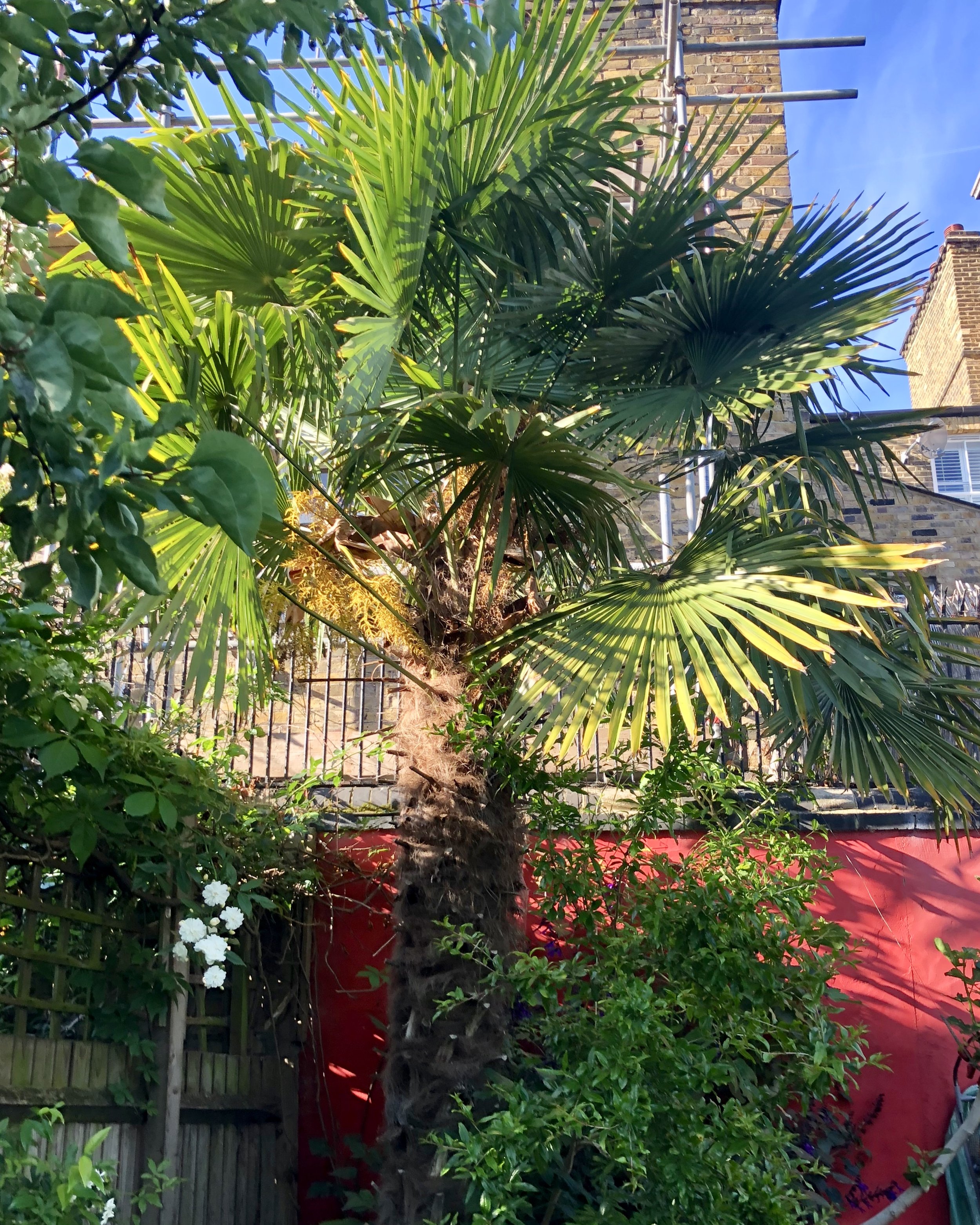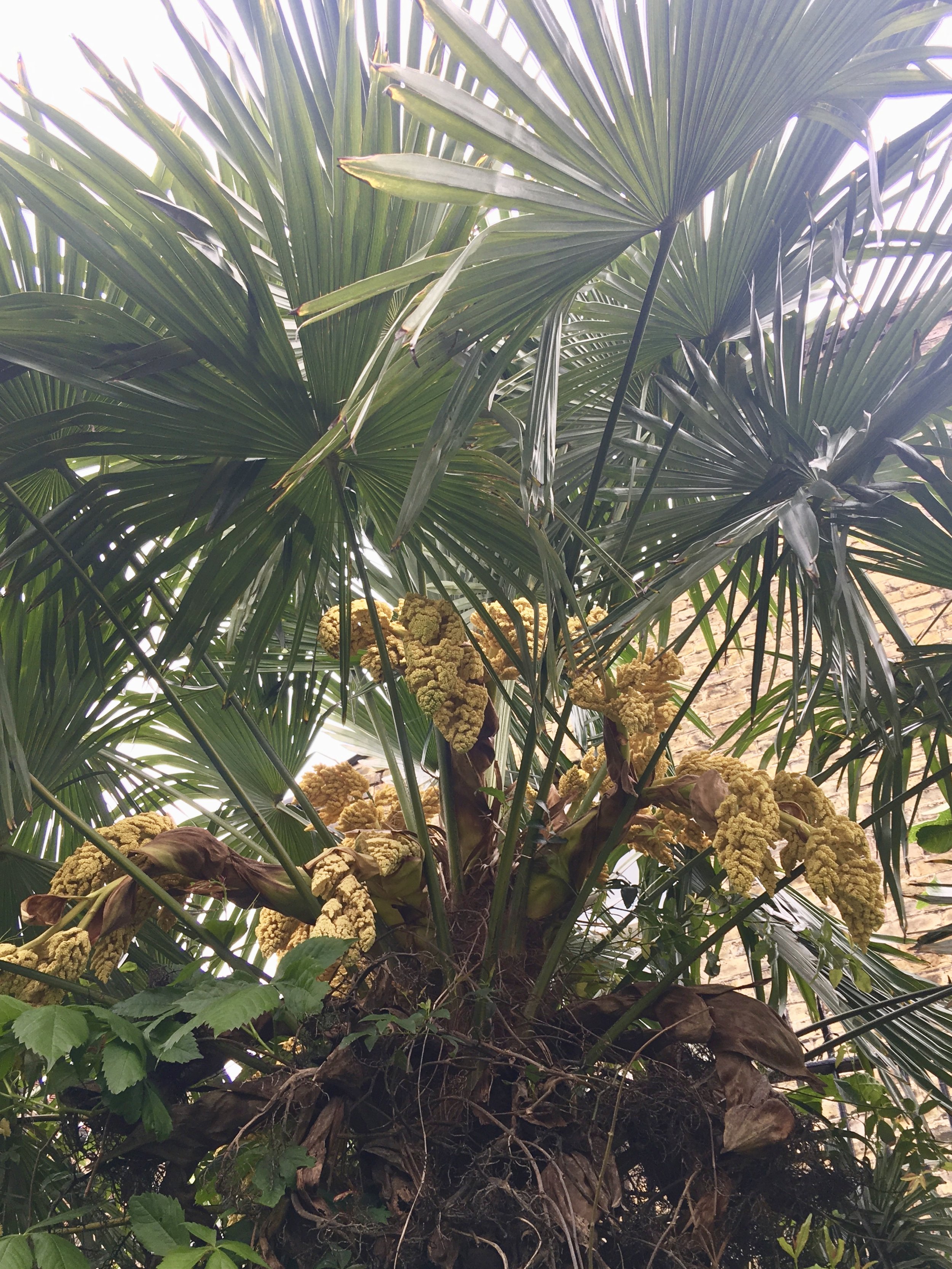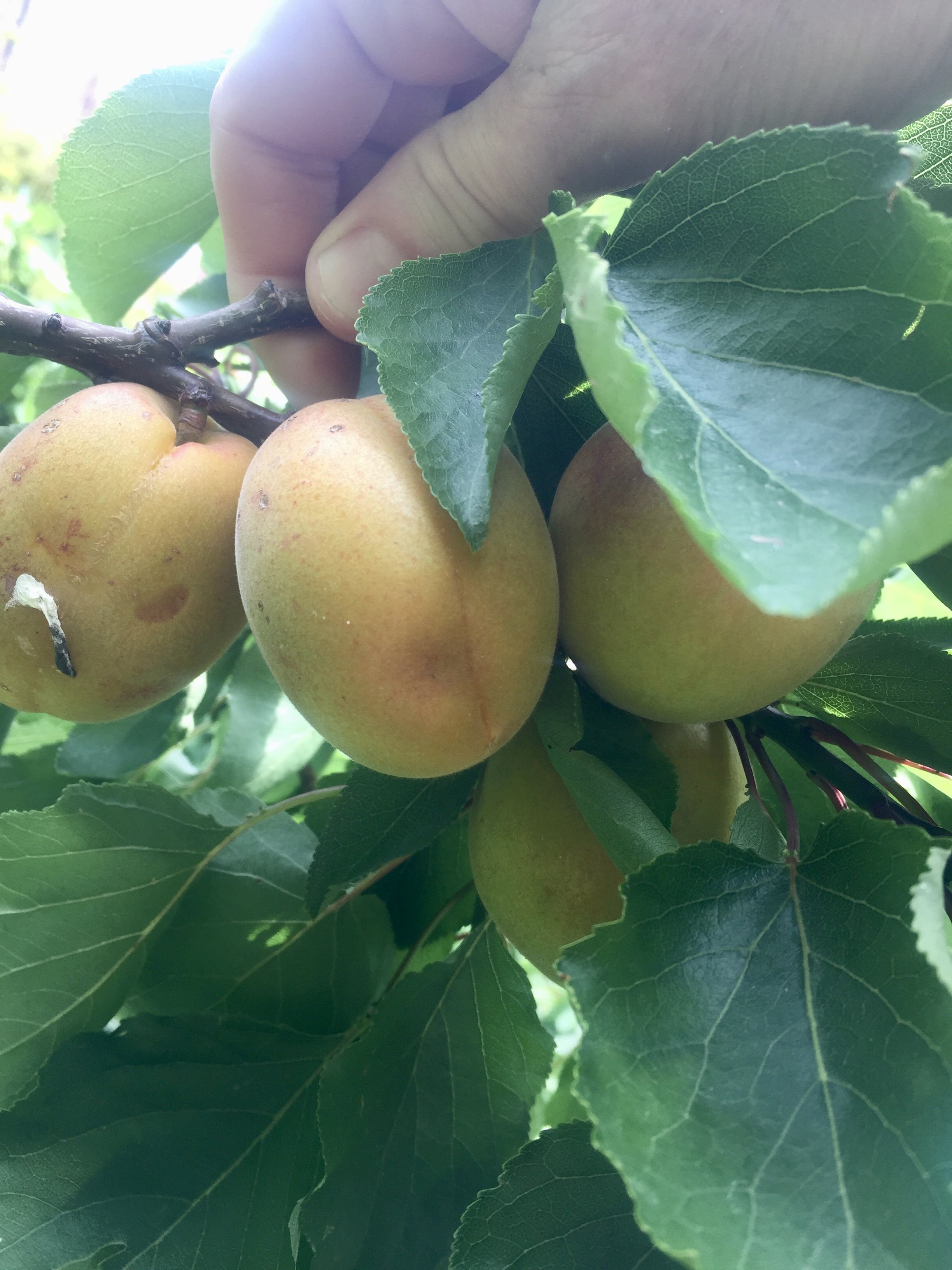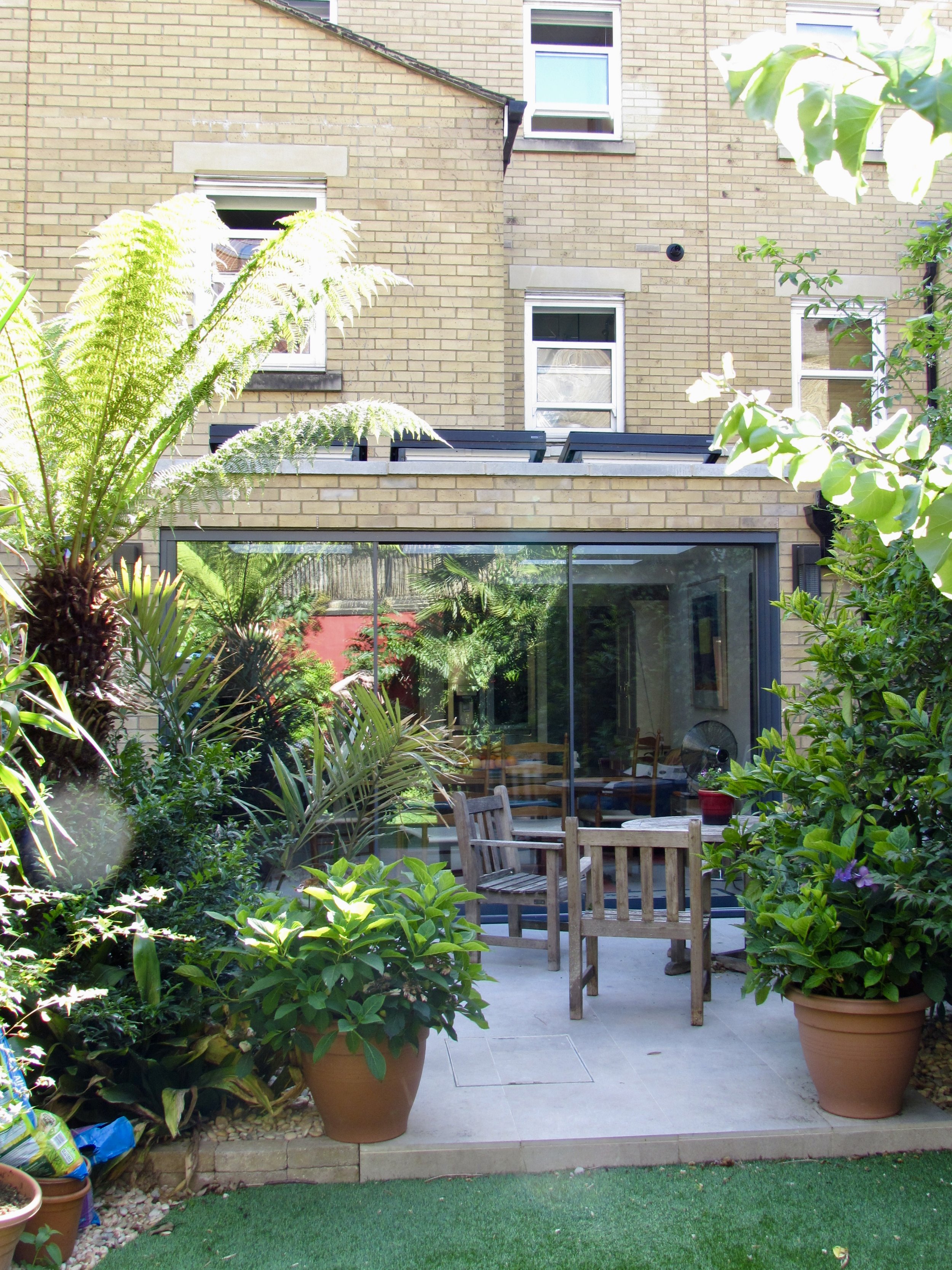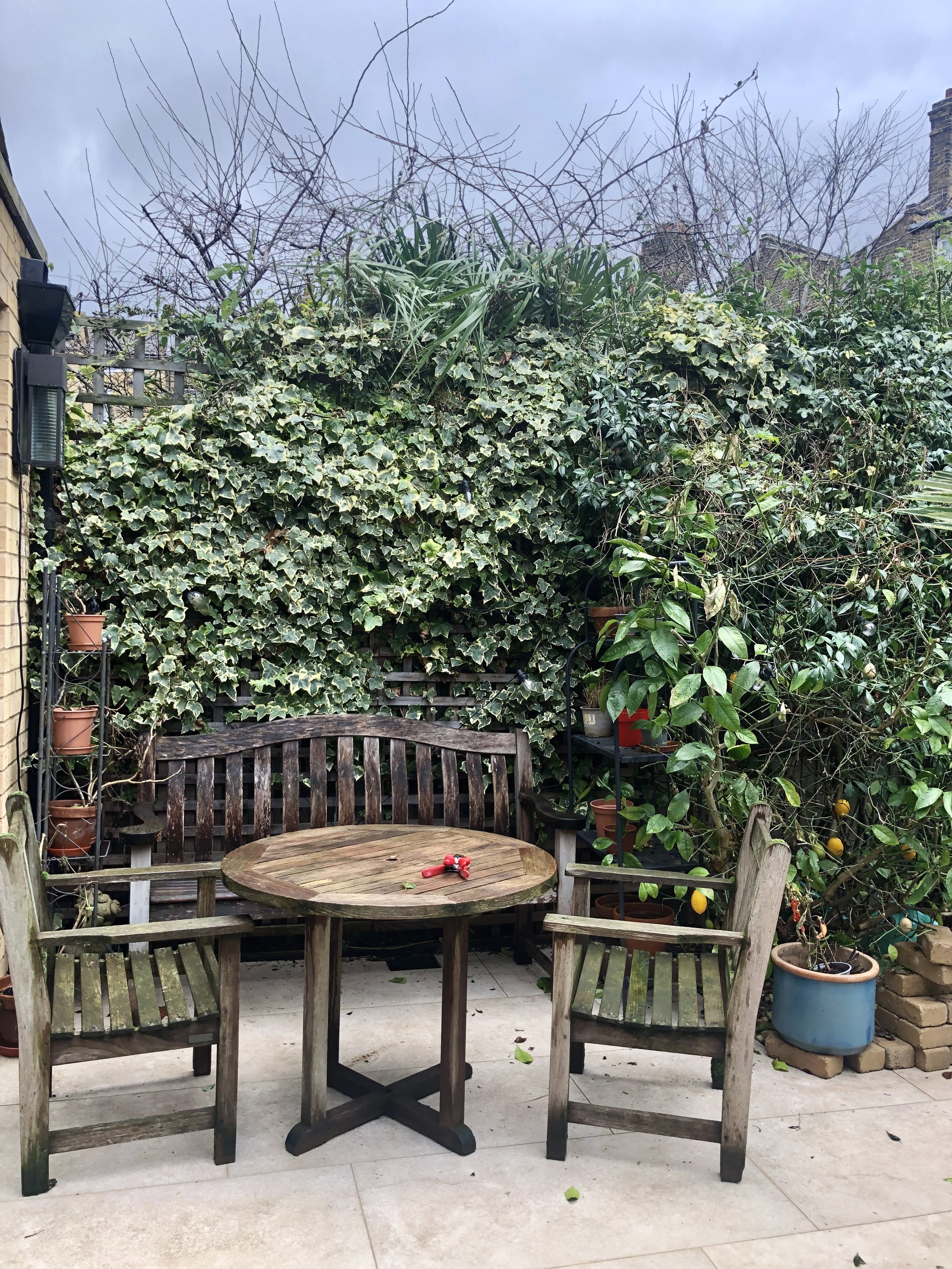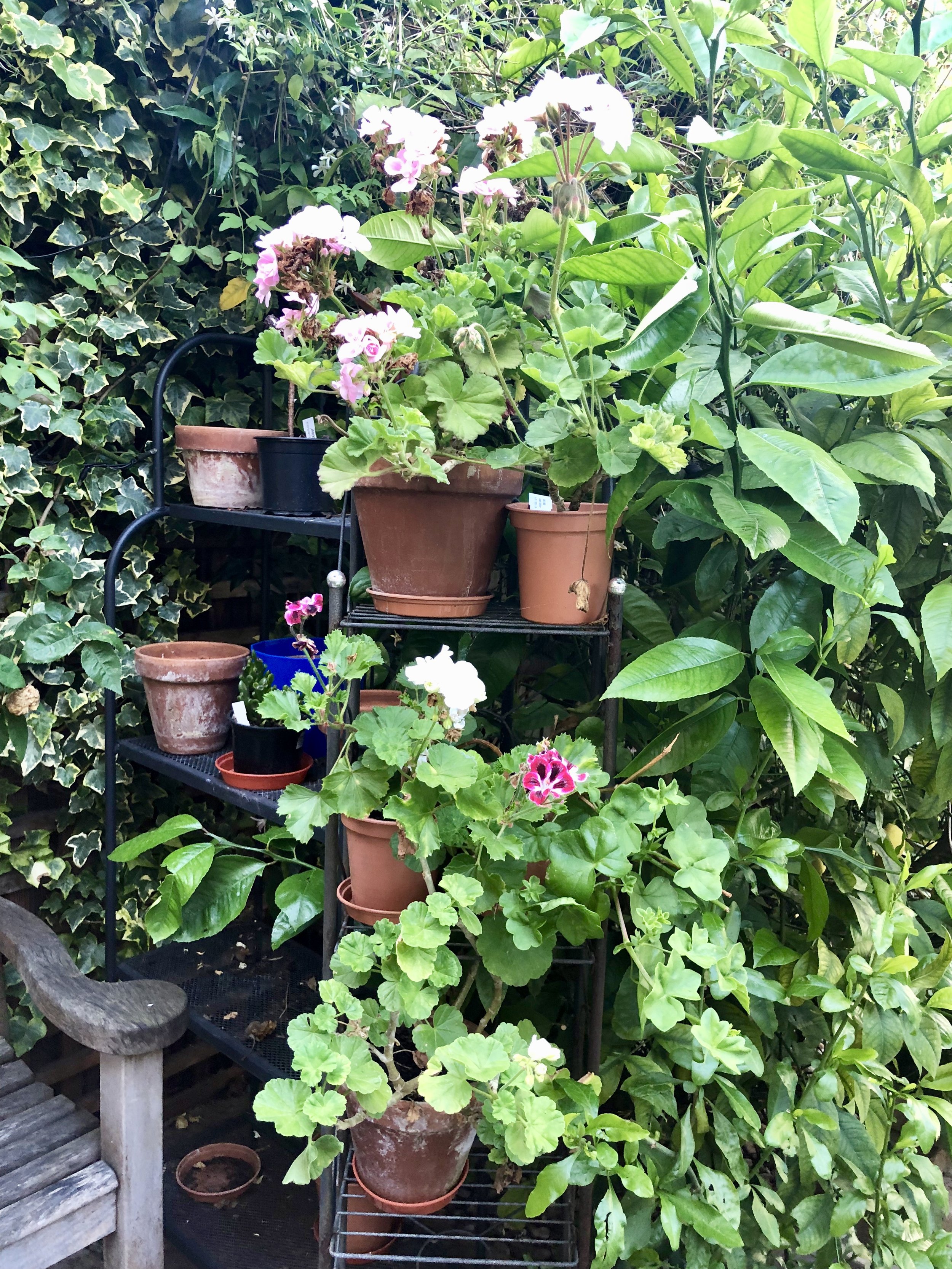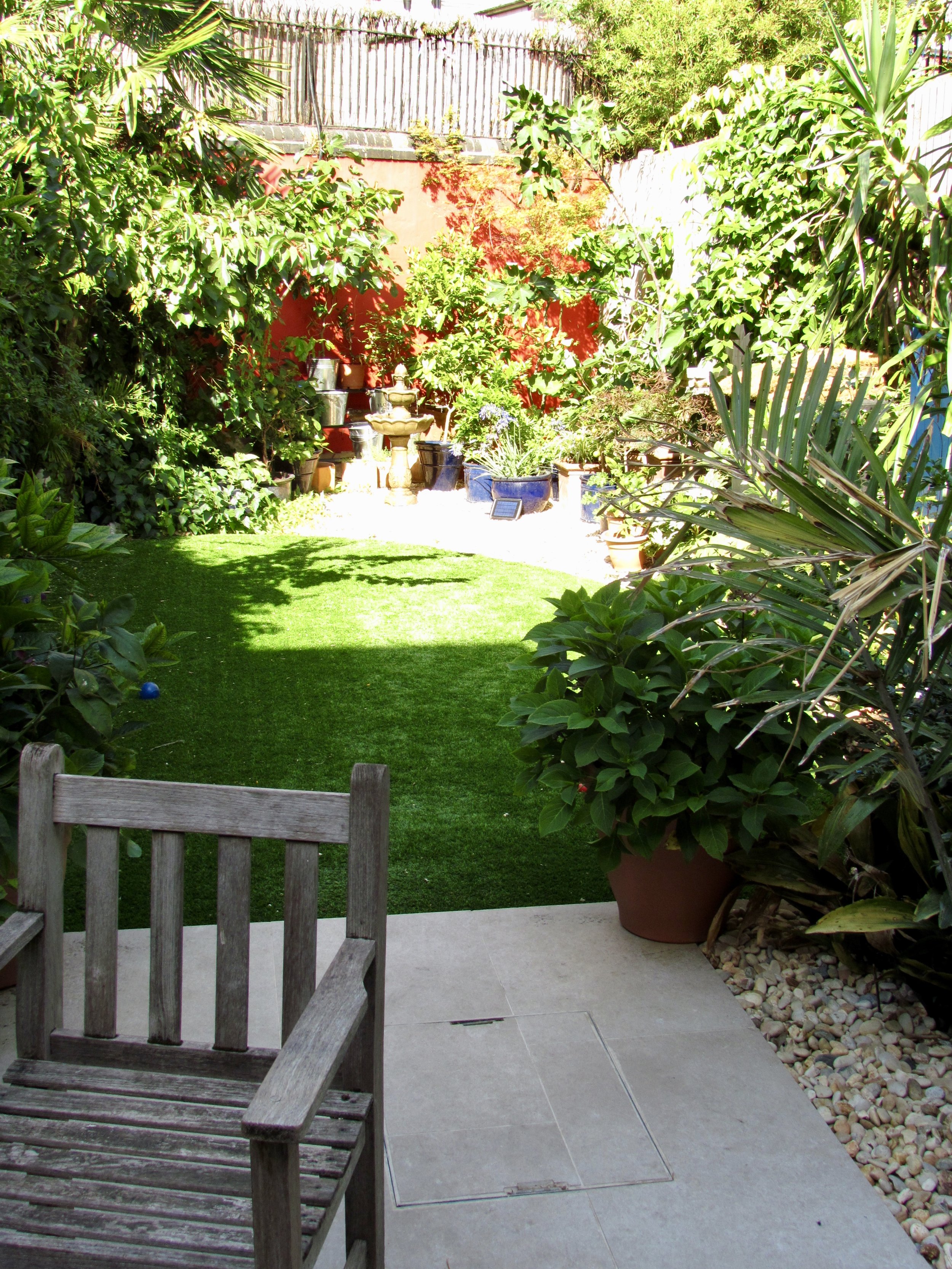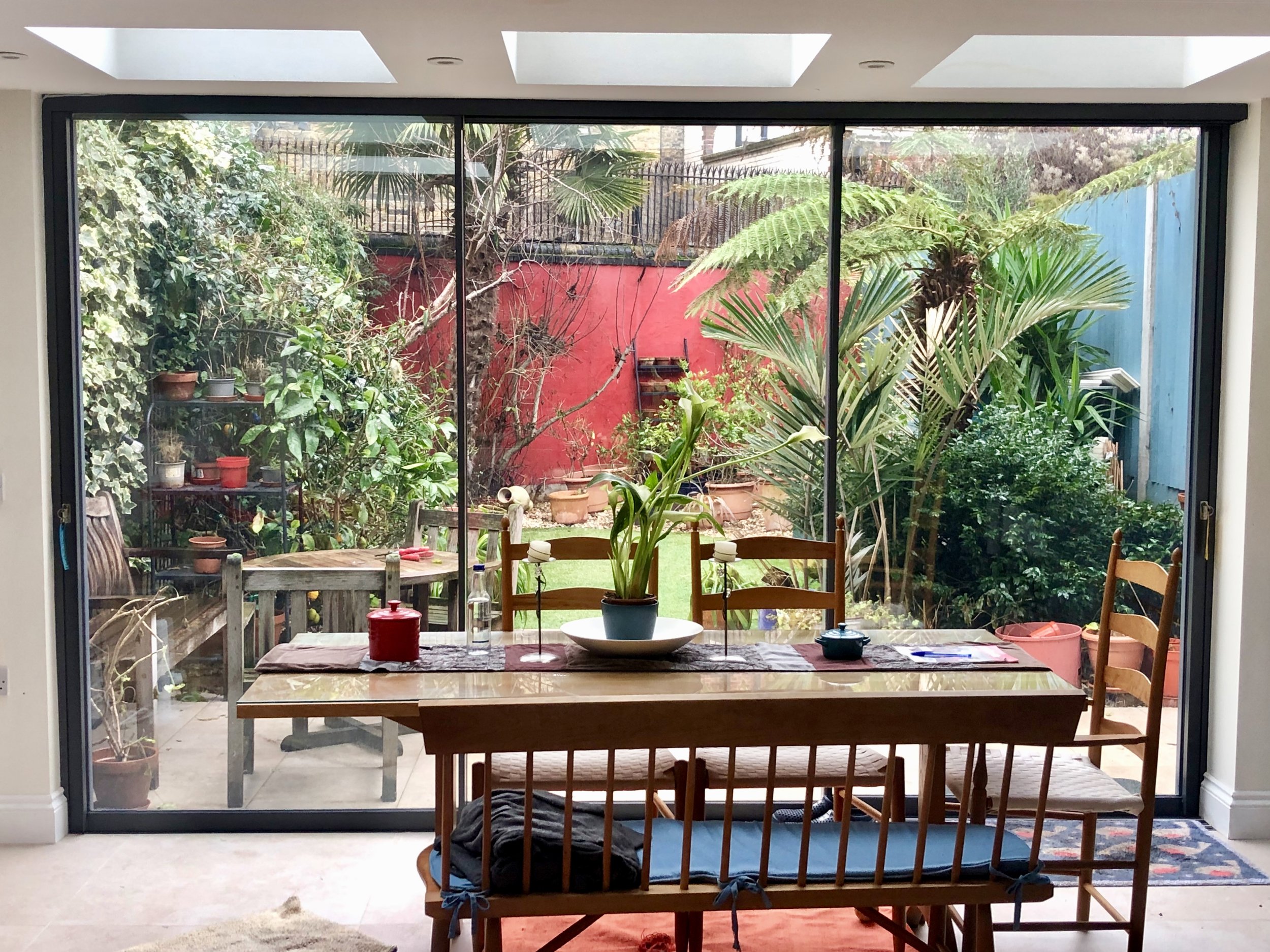103. A London Garden
The London garden is quite winter-bare at the moment but this is an ideal time to do a stock take and decide on what needs doing before the spring growth starts again. The garden started life as a new build mews property over 20+ years ago and has acquired an interesting collection of plants over the years. Once they do start growing the plants go a bit mad, making it tricky to tell them apart. Winter is the best time to “curate” it.
Small as it is, the garden is divided into three main sections: a gravel area by the end wall, a central lawn with beds of climbers along each side and the slightly raised paved patio close to the house.
At the end of the garden there is a collection of citrus trees in pots: lemons, limes, red limes, grapefruit, clementines, oranges and satsumas, mostly acquired during the annual Hampton Court flower show visits. They have suffered a bit from the very cold spell we had before Christmas and are looking a little worse for wear, but usually grow well here and produce a lot of fruit. London temperatures and the protective high walls mean they require very little care: just water, regular feeding and treatment against vine weevil at the beginning of each season. They are trimmed back in spring after fruiting to keep them compact but other than that the only attention given is regular harvesting for the gin and tonics. The lemon tree in particular provides fruit all year round.
The red wall at the end of the garden makes a strong focal point and is a good backdrop for some of the other larger architectural plants: the tall trachycarpus palm, a beautiful delicate-leaved acer and a couple of large fig trees. In summer the shade cast by the palm and fig leaves creates lovely patterns on the wall. The plant stand there is used as a “plant theatre” for collections of plants that can be easily switched in and out depending on the season: early small bulbs, primroses, scented geraniums and succulents. The pots are empty at the moment, waiting for the first show of 2023.
The Trachycarpus (or Chusan Palm) at the end of the garden shows well all year round. Its fibre covered trunk and evergreen palm leaves provide winter interest, it has heavy bunches of yellow flowers in the summer and it produces berries or fruit in the autumn. The 20 year old tree is now tall enough to allow better light to the large fig tree beneath it which will (crossed fingers) mean fully ripened figs this year.
The left hand side wall has a lot of scented climbers: roses, clematis and jasmine mixed in with the ivy. There is also a row of nest boxes hidden beneath them with resident sparrows, blue tits and great tits nesting every year. There are always birds in the garden, dozens of them at a time attracted to the flowers, fruit, shade and bowls of water provided. Watching the groups of birds take turns to bath in the dark blue ceramic bird bowls is one of the great pleasures of summer.
The large apricot tree along that wall fruits well enough every year to produce three large pots of apricot jam but we have to be quick to catch them before the birds do.
Like most London gardens this one is overlooked by neighbours, so there is a private seating area on the patio by the french windows. It is well screened by a large lemon tree / bush and yet more “plant theatre” shelves. These are filled with pots of scented geraniums and fresh herbs giving off a wonderful scent in the summer.
The Dicksonia tree ferns on the other side of the patio provide a secluded corner for storing garden tools, young new plants and mini-greenhouse style boxes of plants waiting to be moved on to the other gardens. That corner of the patio is closest to the house so is a constantly changing group of things that are either being moved in or out of the garden. This convenient storage / transit point is obscured from inside the house by a stained glass window and is not in the line of sight of the view out to the garden.
For a Central London garden this one is amazingly peaceful. Being within 10 minutes walk of the Parliament Buildings there is always background London noise - you can clearly hear Big Ben chiming and the ambulances coming and going from St Thomas’ Hospital. There is also the gentle, steady rumble of tube trains passing deep below us. But the garden is surprisingly quiet and the amount of wildlife using it is amazing: birds, foxes, butterflies, bees and the occasional mouse. And even in winter the garden is a lovely, calm oasis to sit outside in the heart of London.












